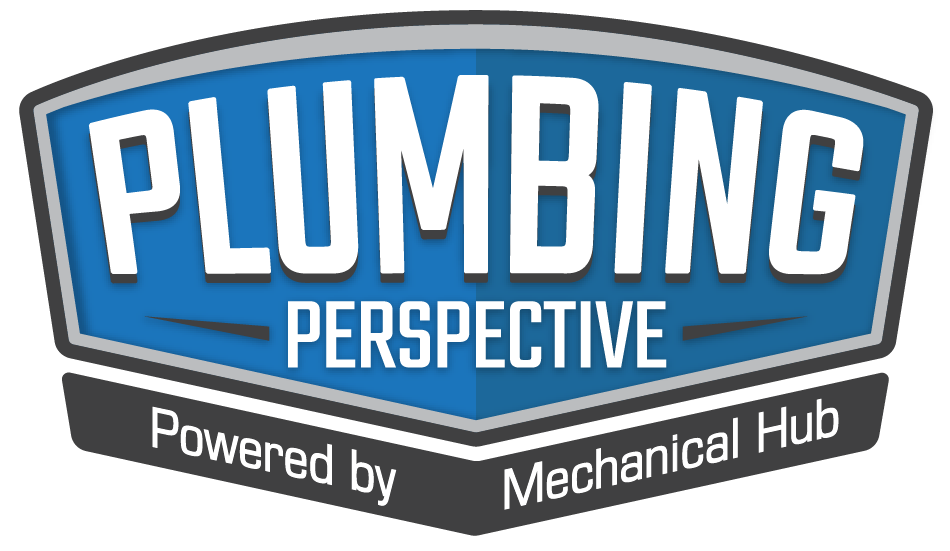Streamlining HVAC/R connections for safer, faster installs QuickFitting®, a leader in plumbing and HVAC solutions, announces the launch of HVAC/R Push-to-Connect refrigerant fittings, an innovation that simplifies the installation and maintenance of HVAC/R systems. With no flaring, brazing or special tools required, installers can connect refrigerant lines in seconds simply by pushing the fitting onto Read more
pipe
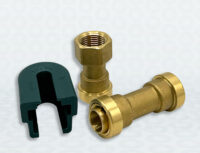
Streamlining HVAC/R connections for safer, faster installs
QuickFitting®, a leader in plumbing and HVAC solutions, announces the launch of HVAC/R Push-to-Connect refrigerant fittings, an innovation that simplifies the installation and maintenance of HVAC/R systems. With no flaring, brazing or special tools required, installers can connect refrigerant lines in seconds simply by pushing the fitting onto the pipe. This approach enables contractors and technicians to make leak-free connections in seconds to reduce installation time and simultaneously enhance safety on the jobsite.
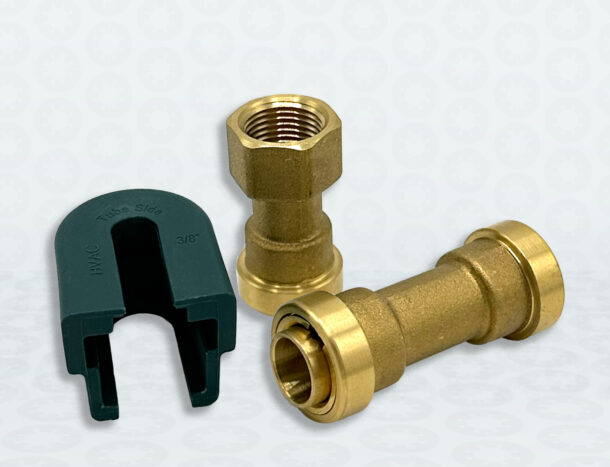
QuickFitting’s HVAC Push-to-Connect refrigerant fittings significantly cut back the time and risk involved in installing or repairing refrigerant lines. Compared to traditional methods, push-to-connect technology enables the rapid joining of copper or coated aluminum line sets in seconds. By eliminating the need for an open flame, the fittings enhance safety on the jobsite and provide technicians with greater flexibility to work in confined or sensitive environments. The result is a faster and safer installation process that helps HVAC professionals complete jobs more efficiently and with reduced risk.
“This innovation was derived from a true need in the market,” said Katie Zyra, marketing director at QuickFitting. “By removing the need to braze, obtain a hot work permit, and have fire spotters, you’re reducing risks while saving time and money on the jobsite. Our patented leak-proof technology significantly saves time, reduces the possibility of errors and improves worker safety without compromising performance.”
A patented double O-ring and grip ring seal delivers a secure, leak-free connection that withstands galling, vibration, pulsation and extreme temperature changes. The heavy-duty body is corrosion- and UV-resistant for long-lasting performance, while yellow protective caps keep debris out during handling and installation. These fittings are designed for residential and commercial HVAC/R applications and are compatible with copper and coated aluminum line sets, as well as HVAC/R units and unitary indoor coils. They are approved for use with industry-standard refrigerants, including A2L-class refrigerants R-452B and R-454B. Unlike permanent solder/ brazed fittings, QuickFitting’s Push-to-Connect fittings are removable using the patented HVAC Slip Clip™ Release Tool.

Installation is reduced to a simple four-step process: Clean, Debur, Mark and Push. The process begins with cutting the tube at a straight angle and thoroughly cleaning it using an abrasive cloth. The next step involves deburring the inside and outside edges to achieve a smooth finish. Once prepared, the tube should be marked with the correct insertion depth before pushing the fitting onto the tube up to the marked line – no additional tools are required. To remove installed fittings, the system charge must first be isolated or removed to ensure safety. The Slip Clip™ is then slid onto the fitting end, and once properly aligned, the fitting can be pulled away from the pipe to release the connection.
For more information about SurePress, visit www.quickfitting.com.
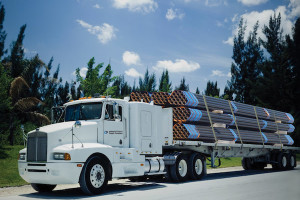
There’s something undeniably satisfying about getting a great deal – it might be snagging a discount on a new gadget or finding a cheaper alternative to an expensive service, or loads of other possibilities, but the point is that saving money always feels like a win. But when it comes to plumbing supplies, cutting corners Read more
There’s something undeniably satisfying about getting a great deal – it might be snagging a discount on a new gadget or finding a cheaper alternative to an expensive service, or loads of other possibilities, but the point is that saving money always feels like a win. But when it comes to plumbing supplies, cutting corners can absolutely end up costing you more in the long run – and that’s not a win at all.
At first glance, it’s easy to think that all pipes, fittings, and fixtures are pretty much the same. After all, they all serve the same function, so why wouldn’t you go for the cheaper option? However, the reality is that not all plumbing supplies and materials are created equal, and skimping on quality can lead to frustrating, expensive, and sometimes even disastrous consequences.
With that in mind, keep reading to find out why the idea that cheaper is better isn’t the right one when it comes to plumbing supplies, and spending a little more initially can save you from a lot of headaches and problems later on.

Cheap Materials Have A Short Lifespan
One of the biggest problems with bargain plumbing supplies is that they just don’t last – lower-cost materials are often made from thin plastics or lightweight metals, for example, and these are things that can’t stand up to the constant wear and tear of water pressure, temperature changes, damp conditions, and so on. True, they might be fine at first so you think it’s all okay, but it’s really only a matter of time before they start to crack, corrode, or degrade.
A low-quality pipe or joint might seem like a great deal when you’re buying it and especially when you’ve got a budget to stick to, but when it fails a few months later and floods the kitchen, the money you saved is going to disappear very quickly. And that’s just the beginning of the problem – the cost of replacing that failed pipe or whatever it was is one thing, but water damage, mould growth, and emergency plumbing fees are going to add up very quickly.
Leaks Lead To Bigger Problems
A small drip from a cheap tap or a tiny leak in a poorly fitted pipe probably won’t seem like a big deal – annoying, yes, but nothing too important to think about. However, given enough time, that little issue can become something much bigger and much more costly to deal with. Water has a sneaky way of finding its way into walls, floors, hidden spaces, even your electrics, and when it does that, it’ll cause untold damage that you won’t be able to see until it’s too late.
Mould loves damp places, and once it starts growing behind walls or under flooring, it’s tough – and expensive – to remove. Then there’s structural damage to think about, and that’s a real nightmare to contend with. It water gets into a wooden beam or your drywall, it can weaken your entire home, which might sound dramatic, but it’s really something that can happen.
Poor Fittings Mean Constant Repairs
When plumbing components don’t fit together properly, you end up dealing with loose connections, weak seals, and recurring leaks… not good in any way, shape, or form. It’s all because cheap materials don’t hold up well to change, so if you need to tighten something, adjust it, or there are temperature changes (which there will usually be with plumbing as water temperatures change a lot in general), so you’re going to always be going back to the same problem time and time again and trying to fix it. That’s going to take time, effort, and money, and all those things can be in short supply.
Instead of buying supplies that need to be replaced every few months, it makes so much more sense to invest in high-quality and much more durable materials and supplies – choose ones that will last for years of being used all the time, and just think about all the problems that’s going to prevent. Yes, you will need to spend more when you buy it, but when you’ve got cheaper materials, you’ll have to spend more to replace it, fix it, and deal with the problems they cause, and that’s probably going to end up costing more than just buying the good stuff right at the start!
Cheap Fixtures Waste Water And Energy
Low-cost plumbing supplies, like taps, showerheads, toilets, and so on, often aren’t all that great at water flow regulation – that’s something that tends to cost a little more. So that means they either use far more water than they should, or they’ll have low water pressure, which is truly frustrating. And all of these things make life a lot harder when you just want things to be easy and have a nice bathroom, ensuite, cloakroom, kitchen… you get the idea.
Want a great shower that really wakes you up? Don’t buy a cheap showerhead or you’ll end up with a trickle of water that you’ll hate. Want an efficient toilet? Spend a little more because a cheap toilet is probably going to need more than one flush and that’s wasting water (and time if you’ve got to wait for the tank to refill). What we’re saying is that these cheaper items are increasing your utility bills over time, and that means those initial savings are going to get eaten up – you won’t have saved anything and will probably pay more. Pay more at the start, and save money on your bills – that’s a much better way round to do it, especially as you’ll be kinder to the planet at the same time.
Emergency Repairs Are Expensive
One of the biggest hidden costs of using cheap plumbing supplies is the potential for having to deal with an emergency repair situation – after all, when a ‘bargain’ pipe bursts in the middle of the night, or a cheap valve fails and you don’t spot it at first, you’re going to have to pay for experts to come and sort out the problem, and that’s not usually going to be cheap.
Unlike planned maintenance or scheduled upgrades, emergency repairs tend to cost more (especially if they’re out of hours), and what started as a fantastic way to save some money and still get the job done ends up being one of the most expensive mistakes you can make. It’s better not to tempt fate and just do it well from the very start.
You’ll Compromise Safety
So we’ve talked – a lot – about the financial costs of cheap plumbing supplies, but the fact is these cheaper items can also be an issue when it comes to safety, so even if money isn’t your main concern and you’re happy to keep paying out for fixes, you’ve got to admit that you want a safe place to live, haven’t you?
So what’s the issue? Well, poorly made components can lead to contaminated water, gas leaks, or even problems with the structural integrity of a building – that’s not good. And it’s why the plumbing industry has such strict regulations about things, and why ignoring those regulations to save a little money can actually put your home and family at risk.
A great example of durable and reliable construction materials can be seen in cities – for example, manhole frames and covers are circular and made of cast iron because they need to be incredibly strong, weather-resistant, and long-lasting. If corners were cut on these types of things, the failures would be awful and potentially life-threatening, so it just can’t be done. Plus, the constant repairs would cost a huge amount, and that would put taxes up for everyone – no one’s going to be happy with that. So why not apply the same principle to your home? It could make all the difference and it’s sure to make purchasing decisions a lot easier too.
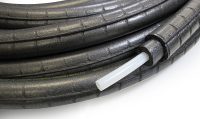
Eliminate the two-step process of insulation after installation to save time and labor costs with Uponor’s pre-insulated PEX pipe offering. With insulation thicknesses available up to 2″ to comply with ASHRAE Standard 90.1 and International Energy Conservation Code (IECC) requirements, the offering features Uponor AquaPEX® pipe for plumbing and Wirsbo hePEX™ oxygen-barrier pipe for hydronic Read more
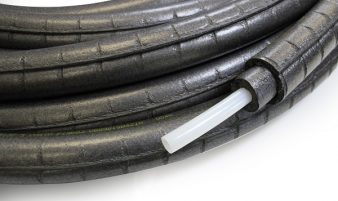 Eliminate the two-step process of insulation after installation to save time and labor costs with Uponor’s pre-insulated PEX pipe offering. With insulation thicknesses available up to 2″ to comply with ASHRAE Standard 90.1 and International Energy Conservation Code (IECC) requirements, the offering features Uponor AquaPEX® pipe for plumbing and Wirsbo hePEX™ oxygen-barrier pipe for hydronic heating and cooling applications.
Eliminate the two-step process of insulation after installation to save time and labor costs with Uponor’s pre-insulated PEX pipe offering. With insulation thicknesses available up to 2″ to comply with ASHRAE Standard 90.1 and International Energy Conservation Code (IECC) requirements, the offering features Uponor AquaPEX® pipe for plumbing and Wirsbo hePEX™ oxygen-barrier pipe for hydronic heating and cooling applications.
To learn more, visit uponorpro.com.
AB&I Foundry, an Oakland-based company that manufactures cast iron pipe and fittings for the plumbing industry, announced that they have joined the Rev Net™ Business Sustainability Group which is part of the flagship Sustainability Circle® program. The REV Net Sustainability Circle® program will help AB&I in the adoption of the best possible sustainability practices that Read more
AB&I Foundry, an Oakland-based company that manufactures cast iron pipe and fittings for the plumbing industry, announced that they have joined the Rev Net™ Business Sustainability Group which is part of the flagship Sustainability Circle® program.
The REV Net Sustainability Circle® program will help AB&I in the adoption of the best possible sustainability practices that include behavioral changes in a proven peer-learning model that is intended to accelerate business impact. The Rev Net™ program will help to enhance existing initiatives the company has already embarked upon while identifying new ways to reduce and recycle by-products in their manufacturing processes.
“The take away from being part of this group will be for us to create a 5-year sustainability action plan where key initiatives are identified ultimately driving efficiencies all while fostering a Green culture within the company,” said Mike Olvera, Environmental and Sustainability Manager of AB&I Foundry. Olvera continued, “AB&I is environmentally conscience and is a giant recycler – our products are made from 100-percent post-consumer scrap metal and they’re recyclable at the end of their service life.”
There are multiple benefits from being part of this program including; immediate and long-term efficiencies, new insights and ideas on how to be innovative, improved team member engagement, and the adoption of a comprehensive sustainability plan.
“The manufacturing atmosphere is changing and there are many progressive forward thinking companies like AB&I Foundry that strongly believe that the gold standard is to embrace thoughtful sustainability manufacturing practices. AB&I fits perfectly into our sustainability business model and we are excited that they have chosen to be part of our program,” explains Jenny Sant’Anna, REV VP of Operations. “Their participation in the program and development of a robust sustainability action plan confirms their strong commitment toward building an environmentally conscientious, resilient, and flourishing future for their business and their community.”
Quick Facts
Location: Oakland, California
Team Members: 206 total, Oakland residents = 70, or 34%
Founded: 1906 — Proud member of the Oakland community for 110 years
Acquired: 2006 — McWane, Inc.
Capital Improvements: $1.25 million in 2014 and $2.33 million in 2015
Major recent EHS successes: Over twenty (20) energy efficiency projects in the past 5 years that equate to 6.6 million Kilowatt hours of savings
Environmental sustainability: 100 million pounds of scrap iron and steel is recycled annually into finished product, reducing energy use and air emissions. 100–percent process and cooling water is recycled, equating to over 1 million gallons per day usage reduction.
Contact: Francesca Dunbar
Director of Group Marketing
(925) 216-1828 or email: Francesca.dunbar@mcwaneplbgrp.com
The Colt Series backflow prevention assemblies from Ames Fire & Waterworks are a complete line of 2 ½”- through 10″-diameter double check, double check detector, reduced pressure zone, and reduced pressure zone detector assemblies. The Colt Series valve body and closure sleeve are manufactured from corrosion-resistant 300 Series stainless steel, providing reliability and long service Read more
The Colt Series backflow prevention assemblies from Ames Fire & Waterworks are a complete line of 2 ½”- through 10″-diameter double check, double check detector, reduced pressure zone, and reduced pressure zone detector assemblies. The Colt Series valve body and closure sleeve are manufactured from corrosion-resistant 300 Series stainless steel, providing reliability and long service life.
Both compact and lightweight, these backflow assemblies provide reliable flow control and are easily installed, maintained, and serviced. Third-party agency listings and approvals are available for horizontal, vertical, and “N” or “Z” pattern installations.
In addition, these BAA-compliant devices are provided with flanged or grooved-end NRS, OSY, or PIV gate valves or UL Listed/FM-approved slow-close butterfly valves.
Applications include fire protection and potable water distribution systems.
For more information, visit AmesFireWater.com.
